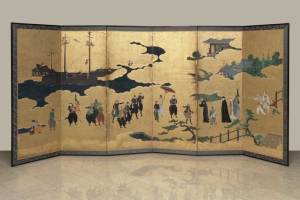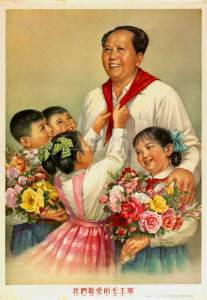‘The greatest event since the creation of the world, apart from the incarnation and death of Him who created it’, was how the 16-century Spanish historian Francisco López de Gómara saw the Iberian circumnavigation of the globe. For a Spaniard or Portuguese living at the time, the peninsula must have seemed like a second Eden, abloom with the spices of the east, ablaze with the silver of the Americas.
In 1502, four years after the Vasco da Gama completed the first European sea voyage to Asia, Pope Alexander VI proclaimed his sovereign, King Manuel I of Portugal, ‘Lord of the Conquest, Navigation and Commerce of Ethiopia, Arabia, Persia and India’. This title, lacking as it may have been in Christian humility, proved too modest. It failed to augur Portuguese expansion further eastward – to Malacca on the Malay peninsula, to Macau on the southern coast of China, and Nagasaki in Japan. And it took no account of the Portuguese colonisation of Brazil, discovered two years earlier but still very much terra incognito.
Nowadays, Brazil is visible everywhere in Portugal: in the novelas that crowd the television schedules; in the jets that roll low off the Atlantic into Lisbon’s Portela Airport; in the streets, squares and hotel forecourts where the flags of the two nations fly side by side. Its wares can be seen in the gilded grottoes of Porto’s São Francisco and Santa Clara churches, and in the Leviathan palace-monastery of Mafra, built with the yields of Brazil’s infernal mines.

Namban Folding Screen (Edo era, 1615–1868), Japanese, Courtesy Museu do Oriente
The legacy of Portugal’s sprawling eastern empire, is by contrast largely invisible, even though the Portuguese remained in Goa until 1961 and Macau until as late as 1999. Admittedly, much of its produce was of the perishable kind. But there was a vigorous trade in native arts and artefacts, while the string of mercantile communities stretched across southern Asia developed their own styles and tastes. Much of what survives remains in private hands. But since its opening in 2008, the Museu do Oriente (Orient Museum) in Lisbon, situated in the city’s Alcântara docks, has attempted to document some of this unique culture.
The sheer variety of the collection testifies to the reach of the empire: opium pipes from China; ivory and mother of pearl inlays from India; netsukes from Japan. But a measure of unity is provided by the recurring concern for the utility of display, reflected in the gifts of snuffboxes and fans exchanged with local dignitaries, the portable cabinets, screens and message cases designed for transportation, or the icons of Christ and the saints in Mandarin or Indian dress, a Jesuit device to increase their appeal among indigenous peoples.
 It is a theme that recurred in the Orient Museum’s recent exhibition, ‘Cartazes de Propaganda Chinesa – A Arte ao Serviço da Política’ (‘Chinese Propaganda Posters – Art in the Service of Politics’). Art and literature, declared Mao Zedong in 1942, should ‘operate as powerful weapons for uniting and educating the people and for attacking and destroying the enemy’. The Cultural Revolution was of course as much about destruction as creation. But it had its own iconography too. Instead of Jesus and the saints there were new, secular deities – Mao himself, of course, who appears in a range of benevolent poses, but also foreign socialist champions, such as Lenin and the Canadian doctor Norman Bethune, who had served with the Republicans in the Spanish Civil War before joining the Chinese resistance to Japan. Images of him healing the sick, surrounded by children, appeared on thousands of posters in the new revolutionary paradise.
It is a theme that recurred in the Orient Museum’s recent exhibition, ‘Cartazes de Propaganda Chinesa – A Arte ao Serviço da Política’ (‘Chinese Propaganda Posters – Art in the Service of Politics’). Art and literature, declared Mao Zedong in 1942, should ‘operate as powerful weapons for uniting and educating the people and for attacking and destroying the enemy’. The Cultural Revolution was of course as much about destruction as creation. But it had its own iconography too. Instead of Jesus and the saints there were new, secular deities – Mao himself, of course, who appears in a range of benevolent poses, but also foreign socialist champions, such as Lenin and the Canadian doctor Norman Bethune, who had served with the Republicans in the Spanish Civil War before joining the Chinese resistance to Japan. Images of him healing the sick, surrounded by children, appeared on thousands of posters in the new revolutionary paradise.
As Asian influence in the global art market expands, there is commensurate interest in Europe in its various cultures. For a long time, the Portuguese offered a window on what could seem a vacuum-sealed world. The Orient Museum draws on this tradition to illuminate, not only the more distant past, but recent history and the present as well.
‘Chinese Propaganda Posters – Art in the Service of Politics’ was at the Museu do Oriente, Lisbon, from 25 January–27 October 2013.

Lisbon Looks East
Share
‘The greatest event since the creation of the world, apart from the incarnation and death of Him who created it’, was how the 16-century Spanish historian Francisco López de Gómara saw the Iberian circumnavigation of the globe. For a Spaniard or Portuguese living at the time, the peninsula must have seemed like a second Eden, abloom with the spices of the east, ablaze with the silver of the Americas.
In 1502, four years after the Vasco da Gama completed the first European sea voyage to Asia, Pope Alexander VI proclaimed his sovereign, King Manuel I of Portugal, ‘Lord of the Conquest, Navigation and Commerce of Ethiopia, Arabia, Persia and India’. This title, lacking as it may have been in Christian humility, proved too modest. It failed to augur Portuguese expansion further eastward – to Malacca on the Malay peninsula, to Macau on the southern coast of China, and Nagasaki in Japan. And it took no account of the Portuguese colonisation of Brazil, discovered two years earlier but still very much terra incognito.
Nowadays, Brazil is visible everywhere in Portugal: in the novelas that crowd the television schedules; in the jets that roll low off the Atlantic into Lisbon’s Portela Airport; in the streets, squares and hotel forecourts where the flags of the two nations fly side by side. Its wares can be seen in the gilded grottoes of Porto’s São Francisco and Santa Clara churches, and in the Leviathan palace-monastery of Mafra, built with the yields of Brazil’s infernal mines.
Namban Folding Screen (Edo era, 1615–1868), Japanese, Courtesy Museu do Oriente
The legacy of Portugal’s sprawling eastern empire, is by contrast largely invisible, even though the Portuguese remained in Goa until 1961 and Macau until as late as 1999. Admittedly, much of its produce was of the perishable kind. But there was a vigorous trade in native arts and artefacts, while the string of mercantile communities stretched across southern Asia developed their own styles and tastes. Much of what survives remains in private hands. But since its opening in 2008, the Museu do Oriente (Orient Museum) in Lisbon, situated in the city’s Alcântara docks, has attempted to document some of this unique culture.
The sheer variety of the collection testifies to the reach of the empire: opium pipes from China; ivory and mother of pearl inlays from India; netsukes from Japan. But a measure of unity is provided by the recurring concern for the utility of display, reflected in the gifts of snuffboxes and fans exchanged with local dignitaries, the portable cabinets, screens and message cases designed for transportation, or the icons of Christ and the saints in Mandarin or Indian dress, a Jesuit device to increase their appeal among indigenous peoples.
As Asian influence in the global art market expands, there is commensurate interest in Europe in its various cultures. For a long time, the Portuguese offered a window on what could seem a vacuum-sealed world. The Orient Museum draws on this tradition to illuminate, not only the more distant past, but recent history and the present as well.
‘Chinese Propaganda Posters – Art in the Service of Politics’ was at the Museu do Oriente, Lisbon, from 25 January–27 October 2013.
Unlimited access from just $16 every 3 months
Subscribe to get unlimited and exclusive access to the top art stories, interviews and exhibition reviews.
Share
Recommended for you
18th-century Envy
Several displays of 18th-century art have opened recently. What’s behind the current interest in this elegant era?
Draughtsmen
Masculinity is having a moment. The Wallace Collection’s ‘The Male Nude’ follows the Musée d’Orsay’s lead and takes a closer look at men in art
Sex on Show
They were once kept under lock and key, and are still taboo in Japan, but both the British and Fitzwilliam Museums are celebrating shunga prints as art this autumn